The implication, since you indicate that the input is a digital signal, is that you want to either turn the LED ON or OFF.
If that's true, why don't you ditch the opamp and use something like what's shown below to drive the LED?
First transistor inverts the input signal, the second one gets very close to zero volts to hard turn off the third one, which drives the LED ON when the input signal is high.

Here's the LTspice circuit list if you want to play with the circuit. I chose Q3 and the LED from LTspice's component library without getting the manufacturter's data sheets, so there may be a better fit if you choose to look for it.
Version 4
SHEET 1 896 680
WIRE 336 16 -192 16
WIRE 576 16 336 16
WIRE 688 16 576 16
WIRE 336 48 336 16
WIRE 576 48 576 16
WIRE 688 48 688 16
WIRE 688 160 688 128
WIRE 576 256 576 128
WIRE 576 256 448 256
WIRE 688 256 688 224
WIRE 336 336 336 128
WIRE 400 336 336 336
WIRE 576 336 576 256
WIRE 640 336 576 336
WIRE 336 352 336 336
WIRE 336 352 240 352
WIRE 240 384 240 352
WIRE 336 384 336 352
WIRE 576 384 576 336
WIRE -80 400 -96 400
WIRE -32 400 -64 400
WIRE -64 432 -64 400
WIRE -64 432 -96 432
WIRE -32 432 -32 400
WIRE 0 432 -32 432
WIRE 80 432 16 432
WIRE 176 432 160 432
WIRE -192 464 -192 16
WIRE 16 464 16 432
WIRE -192 576 -192 544
WIRE 16 576 16 544
WIRE 16 576 -192 576
WIRE 240 576 240 480
WIRE 240 576 16 576
WIRE 336 576 336 464
WIRE 336 576 240 576
WIRE 448 576 448 352
WIRE 448 576 336 576
WIRE 576 576 576 464
WIRE 576 576 448 576
WIRE 688 576 688 352
WIRE 688 576 576 576
WIRE -192 640 -192 576
FLAG -192 640 0
SYMBOL nmos 640 256 R0
SYMATTR InstName Q3
SYMATTR Value BSZ067N06LS3
SYMBOL LED 672 160 R0
SYMATTR InstName LED1
SYMATTR Value LUW-W5AP
SYMBOL res 672 32 R0
WINDOW 0 35 33 Left 2
WINDOW 3 37 61 Left 2
SYMATTR InstName R6
SYMATTR Value 12
SYMBOL res 560 32 R0
SYMATTR InstName R4
SYMATTR Value 1500
SYMBOL res 560 368 R0
SYMATTR InstName R5
SYMATTR Value 1000
SYMBOL nmos 400 256 R0
SYMATTR InstName Q2
SYMATTR Value 2N7002
SYMBOL res 320 32 R0
SYMATTR InstName R2
SYMATTR Value 1500
SYMBOL res 320 368 R0
SYMATTR InstName R3
SYMATTR Value 1000
SYMBOL npn 176 384 R0
SYMATTR InstName Q1
SYMATTR Value 2N3904
SYMBOL res 176 416 R90
WINDOW 0 0 56 VBottom 2
WINDOW 3 32 56 VTop 2
SYMATTR InstName R1
SYMATTR Value 10k
SYMBOL voltage 16 448 R0
WINDOW 3 24 96 Invisible 2
WINDOW 123 0 0 Left 2
WINDOW 39 0 0 Left 2
SYMATTR InstName V1
SYMATTR Value PULSE(0 2.5 10m 1u 1u 100m 200m)
SYMBOL voltage -192 448 R0
WINDOW 123 0 0 Left 2
WINDOW 39 0 0 Left 2
SYMATTR InstName V2
SYMATTR Value 28
TEXT -120 400 Left 1 ;2.5
TEXT -120 432 Left 1 ;0V
TEXT -176 608 Left 2 !.tran 1s uic
TEXT 696 120 Left 2 ;50W!

